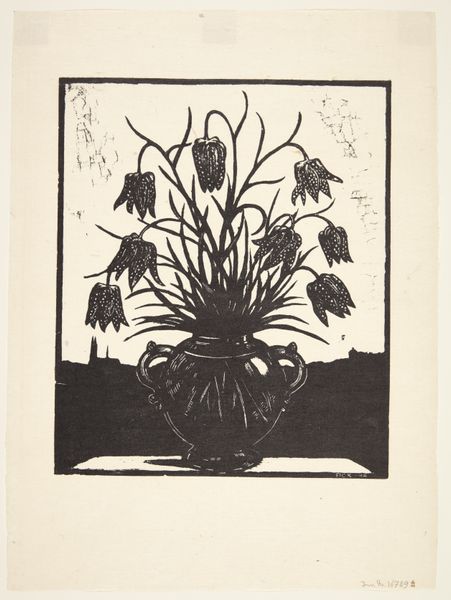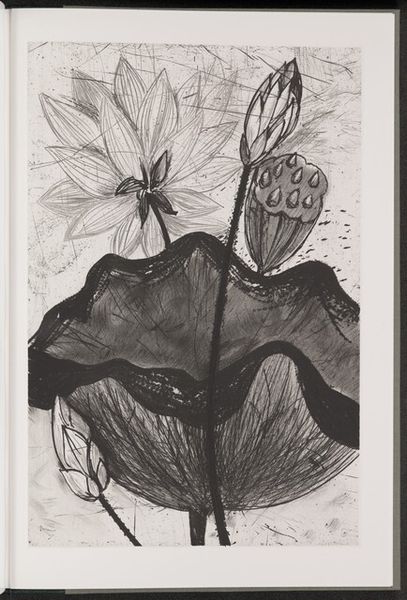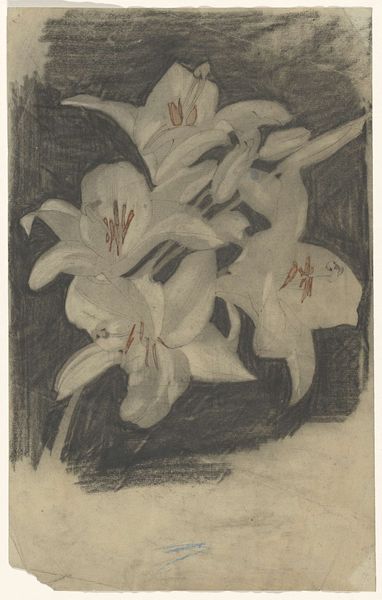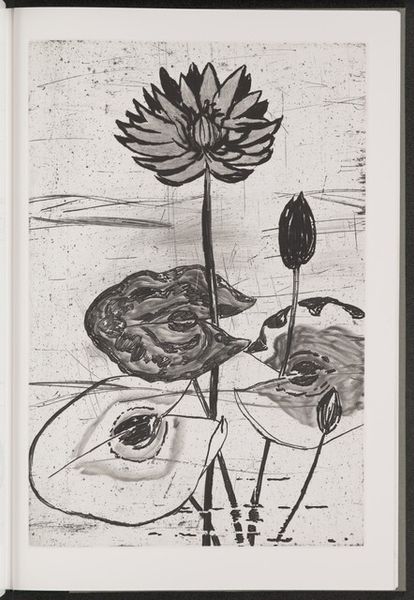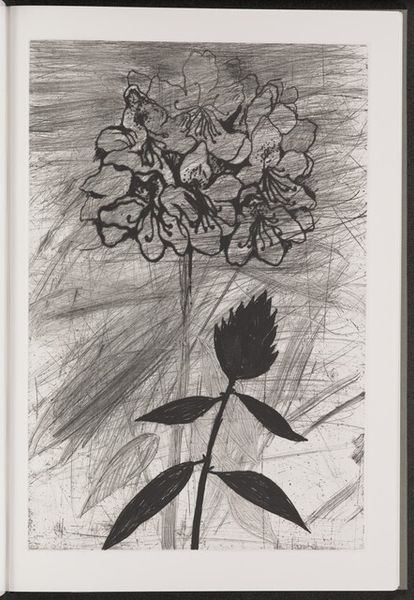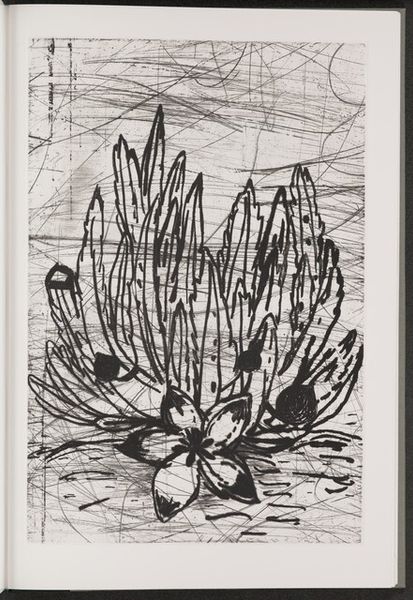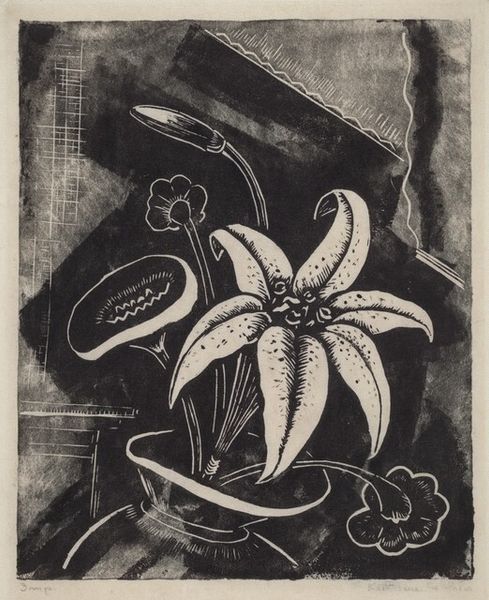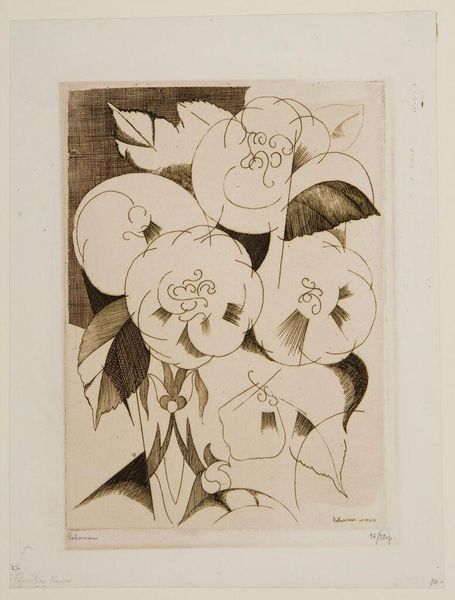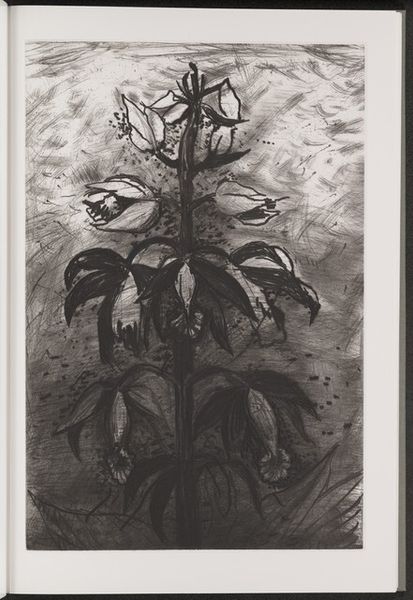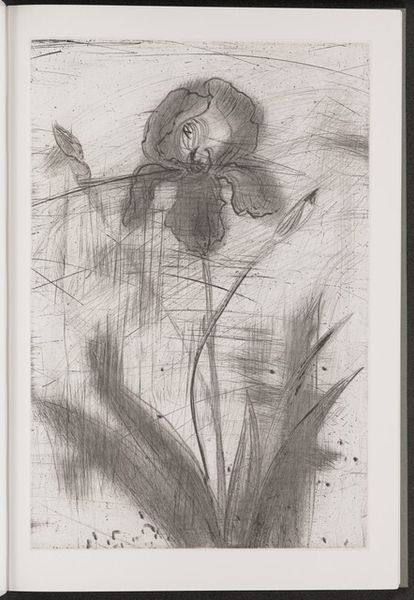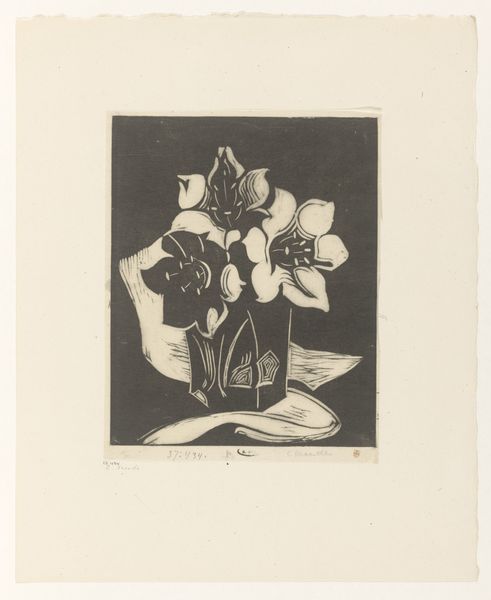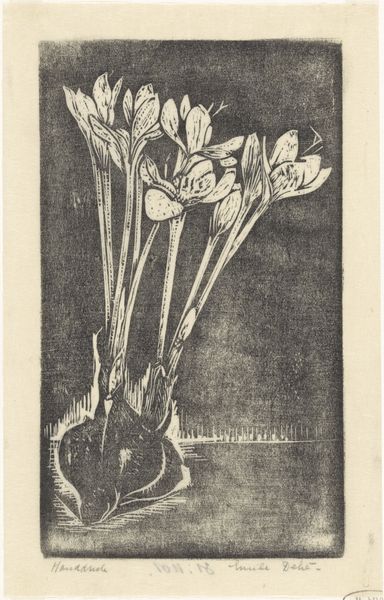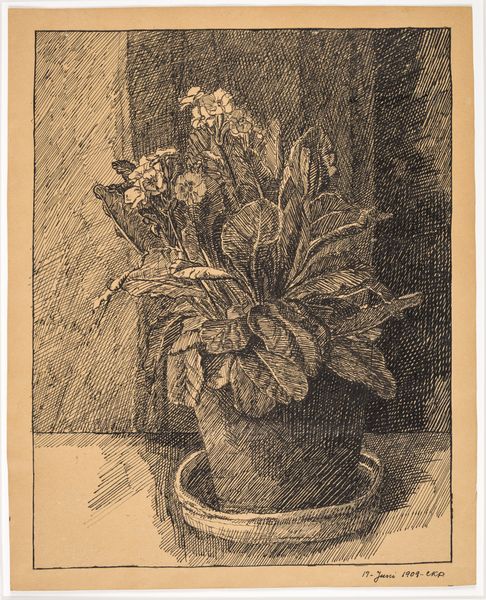
drawing, print, etching, ink
#
drawing
#
pen drawing
# print
#
etching
#
ink
#
modernism
Dimensions: plate: 45.7 x 30.5 cm (18 x 12 in.) page size: 52 x 35.5 cm (20 1/2 x 14 in.)
Copyright: National Gallery of Art: CC0 1.0
Editor: Jim Dine’s etching and ink print, *Snowdrop*, created in 1984, feels both delicate and a bit rough around the edges, if that makes sense. The dark background almost swallows the white flowers. What do you see in this piece? Curator: What immediately captures my attention are the snowdrops themselves. They have historically served as a potent symbol, often tied to concepts of hope and resilience in the face of winter's bleakness. Spring flowers represent overcoming. Dine created this in 1984 – a decade facing environmental and socio-political anxieties. Editor: That’s interesting! So the flower becomes more than just a flower… Curator: Precisely. Consider the act of naming – ‘snowdrop’. Language connects this imagery to purity and perhaps a poignant acknowledgement of fragility amidst a world moving into what some considered to be a darker period. Does that symbolic association resonate with you as you view this? Editor: I think so. Now that you mention it, seeing it as a sign of hope, of something persevering through hardship, does change how I perceive the work. Especially knowing the time period. It’s like the flower has a voice. Curator: Visual symbols often act as a cultural language. Even the deliberate choice of etching and ink, with their inherent qualities of contrast and texture, contributes to a symbolic dialogue here, adding layers of meaning. Editor: That gives me a lot to think about. It’s amazing how much history and meaning can be packed into such a seemingly simple image. Curator: Indeed. It underscores art's ability to function as a carrier of cultural memory. It also is fascinating to witness how differently artworks can resonate across different viewers.
Comments
No comments
Be the first to comment and join the conversation on the ultimate creative platform.
